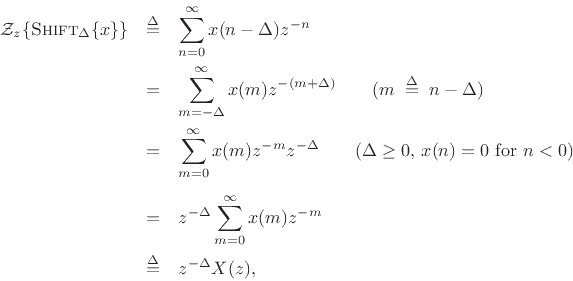Next |
Prev |
Up |
Top
|
Index |
JOS Index |
JOS Pubs |
JOS Home |
Search
The shift theorem says that a delay of  samples
in the time domain corresponds to a multiplication by
samples
in the time domain corresponds to a multiplication by
 in the frequency domain:
in the frequency domain:

S
HIFT
or, using more common notation,
Thus,
 , which is the waveform
, which is the waveform  delayed by
delayed by
 samples, has the z transform
samples, has the z transform
 .
.
Proof:
where we used the causality assumption  for
for  .
.
Next |
Prev |
Up |
Top
|
Index |
JOS Index |
JOS Pubs |
JOS Home |
Search
[How to cite this work] [Order a printed hardcopy] [Comment on this page via email]
![]() samples
in the time domain corresponds to a multiplication by
samples
in the time domain corresponds to a multiplication by
![]() in the frequency domain:
in the frequency domain:


![]() for
for ![]() .
.